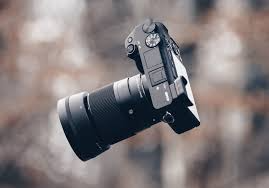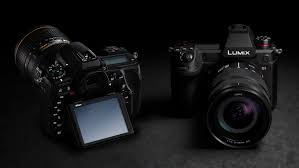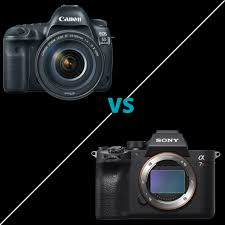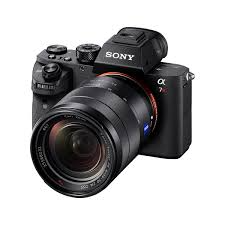The Essentials of Mirrorless Camera Technology
What Defines a Mirrorless Camera?
The Absence of a Reflex Mirror System
The term “mirrorless” refers to the design of the camera that doesn’t use a mechanical mirror to direct light from the lens to an optical viewfinder. This is the core feature that differentiates mirrorless cameras from Digital Single-Lens Reflex (DSLR) cameras, which utilize a mirror to reflect the light up into an optical viewfinder.
Image Capture Mechanics
Without a mirror system, light passes directly through the lens to the digital sensor, which captures the image. This streamlines the process of capturing images, as there are fewer moving parts involved, and light has a more direct path to the sensor.

Advantages of the Mirrorless Design
Size and Weight Reduction
Mirrorless cameras are typically more compact and lighter than their DSLR counterparts due to their simplified internal mechanisms. This makes them particularly appealing for travel photography, street photography, and for anyone who prefers a lighter kit without sacrificing image quality.
Lens Mount and Flange Distance
The flange distance in a camera is the space between the lens mount and the sensor. Mirrorless cameras have a shorter flange distance because there is no mirror in between. This design allows for the development of lenses that can sit closer to the sensor, potentially contributing to better lens designs and overall image quality. It also makes it easier to use a wide variety of lenses with adapters.
Continuous Live View
Since the sensor is always exposed to light, mirrorless cameras offer continuous live view on their LCD screens or electronic viewfinders (EVFs). This feature allows photographers to compose their shots with real-time preview, including exposure, white balance, and depth of field.

Electronic Viewfinders (EVFs) Versus Optical Viewfinders (OVFs)
Real-Time Exposure Preview
One of the significant benefits of electronic viewfinders over optical ones is the ability to preview your exposure in real-time. This means what you see is closer to what you get in your final image, reducing the guesswork in how settings will impact the shot.
Display of Shooting Information
EVFs can display various shooting information and camera settings directly in the viewfinder, which can aid in adjusting exposure, focus, and other settings without taking your eye away from the viewfinder.
Performance and Autofocus
Autofocus Speed and Accuracy
Mirrorless cameras often excel in autofocus performance, especially with the advent of on-sensor phase detection. This technology, combined with contrast-detection autofocus, allows for quick and precise focusing in various shooting conditions.
Eye and Face Detection
Many mirrorless cameras come with advanced features such as eye and face detection, which are invaluable for portrait photography. These systems can lock onto a subject’s eye or face, ensuring sharp focus where it matters most.

Video Capabilities
Superior Video Autofocus
The mirrorless design is conducive to video recording, offering superior autofocus capabilities during video capture compared to most DSLRs. This is due to the camera’s use of the sensor for focusing, rather than a separate phase-detection module used by DSLRs that’s only active when not recording video.
High-Quality Video Output
Mirrorless cameras are often at the forefront of video technology, offering features such as 4K recording, slow-motion, and log profiles for more dynamic range—all of which appeal to both amateur videographers and professionals.
Conclusion
Mirrorless cameras represent a significant shift in photography technology, offering a more streamlined, compact design with capabilities that rival and sometimes surpass DSLRs. As technology continues to advance, the mirrorless system is becoming increasingly popular among photographers and videographers alike, combining high image quality with the convenience of a smaller form factor.

Design and Performance Advantages
Compact Size and Portability
With the omission of the mirror box, mirrorless cameras can be designed with a much slimmer profile than DSLRs. This makes them highly portable and more convenient for photographers on the go, as well as for those looking to reduce the weight and bulk of their gear. Many travelers and street photographers prefer the unobtrusive size of mirrorless cameras, which makes it easier to capture candid shots.
Advanced Autofocus Capabilities
Mirrorless cameras can utilize on-sensor phase-detection autofocus (AF) points. This technology often allows for faster and more accurate AF performance, especially for video where traditional DSLRs may struggle. The continuous live view feed to the sensor also enables real-time autofocus tracking during video recording, which is a game-changer for videographers and vloggers.

Potential Challenges of Mirrorless Camera Systems
Battery Life Concerns
One of the most common drawbacks cited by users of mirrorless cameras is battery life. Mirrorless cameras typically consume more power due to the constant use of the digital sensor and electronic viewfinder or LCD screen for composing images. This stands in contrast to DSLRs, where the optical viewfinder does not require power, allowing them to last longer on a single charge.
Electronic Viewfinder Limitations
While electronic viewfinders offer numerous benefits, such as exposure previews and informational overlays, they also come with their own set of drawbacks. EVFs can lag, especially in low light or when panning quickly, which might disorient some photographers. Additionally, the resolution and refresh rates of EVFs vary across different camera models and may not match the clarity of an optical viewfinder.
Lens Ecosystem
The lens ecosystems for some mirrorless systems are not as mature as those for DSLRs. This means that there might be fewer native lens options available for certain mirrorless camera brands or mounts. While adapters exist to use DSLR lenses on mirrorless bodies, they might not always provide the same autofocus performance and may sometimes be bulkier than native lenses.
Considerations for Professional Use
Durability and Professional Features
Professionals may have concerns regarding the build quality and durability of mirrorless cameras compared to professional-grade DSLRs. While many mirrorless cameras are built to high standards, the perception that they are less rugged can be a deciding factor for those who work in challenging conditions.
Autofocus Performance in Specific Scenarios
While mirrorless cameras are praised for their autofocus capabilities, some users report that they can struggle in specific shooting scenarios, like capturing fast-moving subjects in inconsistent lighting conditions. This is an area where traditional DSLRs, with their separate phase-detection sensors, have historically excelled.
The Future of Mirrorless Technology
Rapid Technological Advancements
Mirrorless camera technology is rapidly evolving, and many of the initial drawbacks are being addressed with each new generation of cameras. For example, battery technology is improving, and EVFs are becoming more advanced with higher resolution and better refresh rates.
Transitioning from DSLR to Mirrorless
For those considering switching from a DSLR to a mirrorless system, there is a period of adjustment. The handling, weight distribution, and operation might differ significantly, which could affect the shooting experience until one becomes accustomed to the new system.
Conclusion
While mirrorless cameras are celebrated for their innovation and the advantages they bring to photography, potential users should be aware of the considerations and compromises that come with the territory. Battery life, electronic viewfinder performance, lens options, durability, and specific autofocus situations are all factors to contemplate. However, as technology progresses, many of these concerns are being addressed, making mirrorless systems increasingly attractive to both amateur and professional photographers.
Choosing Between Mirrorless and DSLR
Assessing Your Needs
When deciding between a mirrorless camera and a DSLR, consider what matters most in your photography. Mirrorless cameras offer a compact size, potentially better autofocus in live view and video, and a digital preview of your image. Meanwhile, DSLRs generally provide longer battery life, an optical viewfinder experience, and may have a broader range of lenses available, especially for specialized photography.
The Future of Photography Equipment
As technology advances, the gap between mirrorless and DSLR cameras continues to narrow. Many manufacturers are focusing their efforts on developing mirrorless systems, which suggests that mirrorless cameras are likely to be at the forefront of photography equipment innovation in the years to come.
